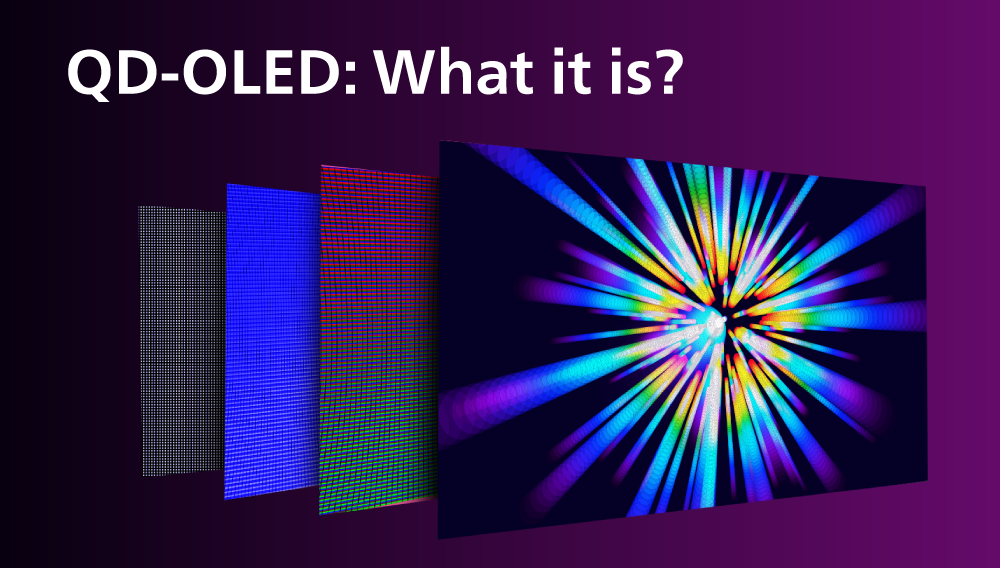![]() 2024/08/26 | MMDInnovationHub
2024/08/26 | MMDInnovationHub
In recent years, we’ve seen plenty of new display technologies—LED, QLED, OLED—which can complicate the process of buying a monitor. However, the time invested in understanding these technologies is well worth it for the experiences they deliver post-purchase. One of the latest advancements in display technology is QD-OLED. Although it has been around for a few years, we have begun to see the first products emerge only recently. Representing a major leap forward in the gaming experience, QD-OLED deserves all our attention. While tech enthusiasts may already be familiar with this technology, many others may not be. Therefore, whether you are already aware of it but are interested in learning more, or whether you were not aware of it until today, this article is for you.
As you may know, Organic Light-Emitting Diode (OLED) displays represent a significant advancement in display technology. Unlike traditional LCD screens, OLEDs use organic compounds that emit light when an electric current is applied. This feature enables each pixel to emit its own light, resulting in deeper blacks, richer colors, and higher contrast compared to LCDs.
 Quantum Dot-OLED represents a cutting-edge display technology that combines the advantages of Quantum Dot and OLED technologies.
Quantum Dot-OLED represents a cutting-edge display technology that combines the advantages of Quantum Dot and OLED technologies.
Featuring the QD-OLED Momentum
Quantum Dot-OLED represents a cutting-edge display technology that combines the advantages of Quantum Dot and OLED technologies.
Quantum dots are microscopic semiconductor nanocrystals that emit specific colors of light when stimulated by an external light source or electrical current, while OLEDs uses organic materials to emit light when electrical current passes through them.
What Does QD-OLED Mean?
QD-OLED represents a fusion of Quantum Dots (QD) and Organic Light Emitting Diode (OLED) technologies, combining the strengths of both into one impressive innovation. In essence, OLED displays rely on pixels (or diodes 1) to deliver exceptional contrast, superb picture quality, and intricate details. With QD-OLED, quantum dots are strategically placed on these diodes, enhancing brightness and enabling a broader color spectrum. This innovative process results in unparalleled clarity and a more expansive color palette.
Is QD-OLED good for gaming?
QD-OLED is excellent for gaming for multiple reasons. As discussed, QD-OLED uses a hybrid approach, combining the best of two technologies to deliver incredibly high contrast and vibrant colors. To better understand the experience, imagine yourself playing your favorite dungeon game. As you navigate the labyrinth, having a clear view of all details and potential traps gives you a significant advantage.
Additionally, to enjoy this technology even more, the Evnia Curved Monitor 34M2C8600 and the Evnia Curved Monitor 49M2C8900 offer an unlimited viewing angle.
The Evnia 34M2C8600 features a curved, futuristic design enhanced with Ambiglow technology: the gamer is placed at the center stage of the curve, with colors extending beyond the monitor’s perimeter, integrating the room into the experience. The Evnia 49M2C8900 takes this even further by incorporating a 240Hz refresh rate, ensuring the experience reaches its maximum potential. For more info on the Evnia 34M2C8600, please check out the product page here. For more info on the Evnia 49M2C8900, please check out the product page here.
Is QD-OLED Really Worth It?
We’re quickly becoming accustomed to stunning visuals on our daily devices, from smartphones to PCs and monitors. When it comes to gaming, the demand for flawless images is paramount. QD-OLED monitors operate at the pixel level, refreshing images individually rather than in sections like other technologies. This precision ensures astonishing picture quality, brightness, and smoothness, minimizing ghosting effects. Whether you’re a casual or a passionate gamer, QD-OLED meets all your needs by flawlessly delivering every detail and dynamic image, allowing you to fully immerse yourself in the game.
Is QD-OLED Susceptible to Burn-In?
Like other OLED technologies, QD-OLED is susceptible to burn-in under certain conditions: the risk is strictly connected to the monitor’s usage; as always, careful use helps avoid problems.
To mitigate the risk of burn-in, it is highly recommended that you change the screen image or turn the monitor off and back on every 4 hours; displaying static images for extended time can result in image retention on the screen.
In contrast, when a moving image is detected, the monitor will recover luminance to its previous working status.
As a further step, you should look at the default setting for the screen saver function to determine whether you need to make it faster than its current setting.
Always be sure that stickers or labels are not applied to the QD-OLED panel, as these may cause image sticking, and use the full screen mode to prevent a residual menu, browser, or other window border images from appearing.
The Evnia Curved Monitor 34M2C8600 and Evnia Curved Monitor 49M2C8900 come with a three-year factory warranty which includes OLED and QD-OLED burn-in coverage. For more info on the Evnia 34M2C8600, please check out the product page here. For more info on the Evnia 49M2C8900, please check out the product page here.
Purchasing a monitor is a very important decision, especially for customers who spend extended amounts of time in front of their screens and who are looking for the best experience available. We’ve summarized features and insights about QD-OLED to help you make an informed purchase, which is essential for customers shopping for gaming devices.